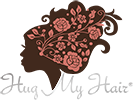How porous is your hair?
Hair porosity is the ability of the hair to retain and absorb moisture. *Quick porousity test - take a couple of stands of hair from your comb and drop into a bowl of water, let it sit for 2 - 4mins. If your hair floats you have low porosity, if it sinks you have high porousity. Alternatively you can choose a strand of your hair stretch it and run your fingers up and down, if it is bumpy it is a sign that your scales are lifted/broken and you have high porousity. Low Porosity Hair Characteristics & Care Tips:
- Healthy looking, shiny, repels moisture when wet, hard to treat chemically as it resists penetration
- Stay away from protein rich daily treatments as this can 'sit' on your hair making it look oily and greasy
- Protein-free daily humecant treatments such as glycerin (including vegetable glycerin) and honey can benefit your hair by attracting and holding moisture to the hair
- Use lighter liquid based products such as hair milks
- Emoilients such as coconut oil complement moisturerisers because they are able to penetrate your hair shaft more readily
- Do not over process/style this hair as this can cause damage in the long run and increase porosity
- The occaisonal deep conditioning treatment with protein rich products can maintain good hair conditions but protein rich products shouldn't be used in your daily hair regimen
- Prone to frizz & tangling in humid weather due to capacity and tendency to allow moisture in freely, simply bathing can cause your hair hair strands to swell
- Anti humecants (such as beeswax, palm oil, olive oil and shea butter) used in high heat and humid climates allow your hair to retain moisture by adding a protective layer to the shaft and prevents them from absorbig excess moisture from the environment
- Protein rich leave in conditioners, moisturisers, sealants/hair butters are your best friend, these fill the gaps in damaged cuticles adding protection from further damage and protects your hair from losing too much moisture

 Damaged hair looks damaged because the scales stand up and outward exposing the cortex, allowing for harmful substances to be deposited, making your hair feel dryer and as a result - harder to brush. Damaged hair is often refered to as
Damaged hair looks damaged because the scales stand up and outward exposing the cortex, allowing for harmful substances to be deposited, making your hair feel dryer and as a result - harder to brush. Damaged hair is often refered to as  Type 3 hair consists of curls that range from slight to very curly. They are defined and give the impression that if you were to sever a group of curls from their roots and attach them to a legless pogo stick– it would still work just fine (so basically this hair type is generally very bouncy). Before we get into the sub-categories, let’s look at some general facts and interesting points to note about curly hair:
Type 3 hair consists of curls that range from slight to very curly. They are defined and give the impression that if you were to sever a group of curls from their roots and attach them to a legless pogo stick– it would still work just fine (so basically this hair type is generally very bouncy). Before we get into the sub-categories, let’s look at some general facts and interesting points to note about curly hair:
Comments
0 Comments